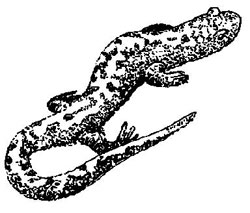Did he ever tempt you into coming back?
No, I would never return. I had many other things that were much better to do during the summer.
I know that he was involved with the Friends of the Three Sisters. Weren’t you as well?
Yes. That was one of the reasons that he visited Eugene. One contact with Dick Brown I will never forget. It was the last time I visited the park, when I had visitors from St. Andrews University in Scotland. H.C. Callan, who was head of the biology department there, along with his wife and daughter, were here visiting me. They were very close friends. I had worked in his lab in St. Andrews a number of times. He was the world authority on lampbrush chromosomes and was one of the pioneers in that field. That was why I first came in contact with him. I took the three of them on a trip around our state. Our very first stop was Crater Lake Park. Dick took us in as his guest and gave us a place to stay in the house that he was occupying at that time. Interestingly enough, that evening there was a meeting of the park personnel. Callan, his wife, and daughter, attended that meeting with me. We had a chance to introduce these guests to all the people of the park. It was a lovely occasion.
Did you see Dick after that?
Yes, I did. I saw Dick fairly regularly until he moved to California, and then I lost all contact with him.
Where did you live in the park?
I lived there in the dormitory that was adjacent to the headquarters building. There was a place there for rangers and ranger naturalists.
Both Years?
Yes, both years. The first year I was in a room there where two others stayed. The second year I had a place to myself.
That was upstairs?
Yes.
Were the room fairly comfortable?
Oh, yes! I liked it. I felt that I was living the life of Riley. The married ranger-natualists, who had families, lived in cabins.


